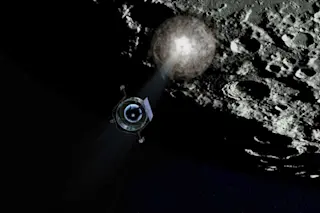The 1950s were a bizarre period in American history. An economic boom brought joy to a generation home from war while a strange level of distrust lingered, of enemies both internal and external, in a nation not quite at war, but not quite at peace either. Technology was advancing in leaps and bounds, and the Space Race between the United States and the Soviet Union was underway. To America’s dismay, the Soviets were winning – at least at first.
But before humans set foot on the moon and America relaxed into self-declared victory, the U.S. seriously considered a surprising plan. The military wanted to nuke the moon. In their defense, it was a very tiny nuclear weapon, only a tenth or so the size of bomb America dropped on Hiroshima. And while such an idea seems absurd by today’s standards, the 1950s saw hundreds of nuclear test explosions on Earth ...














